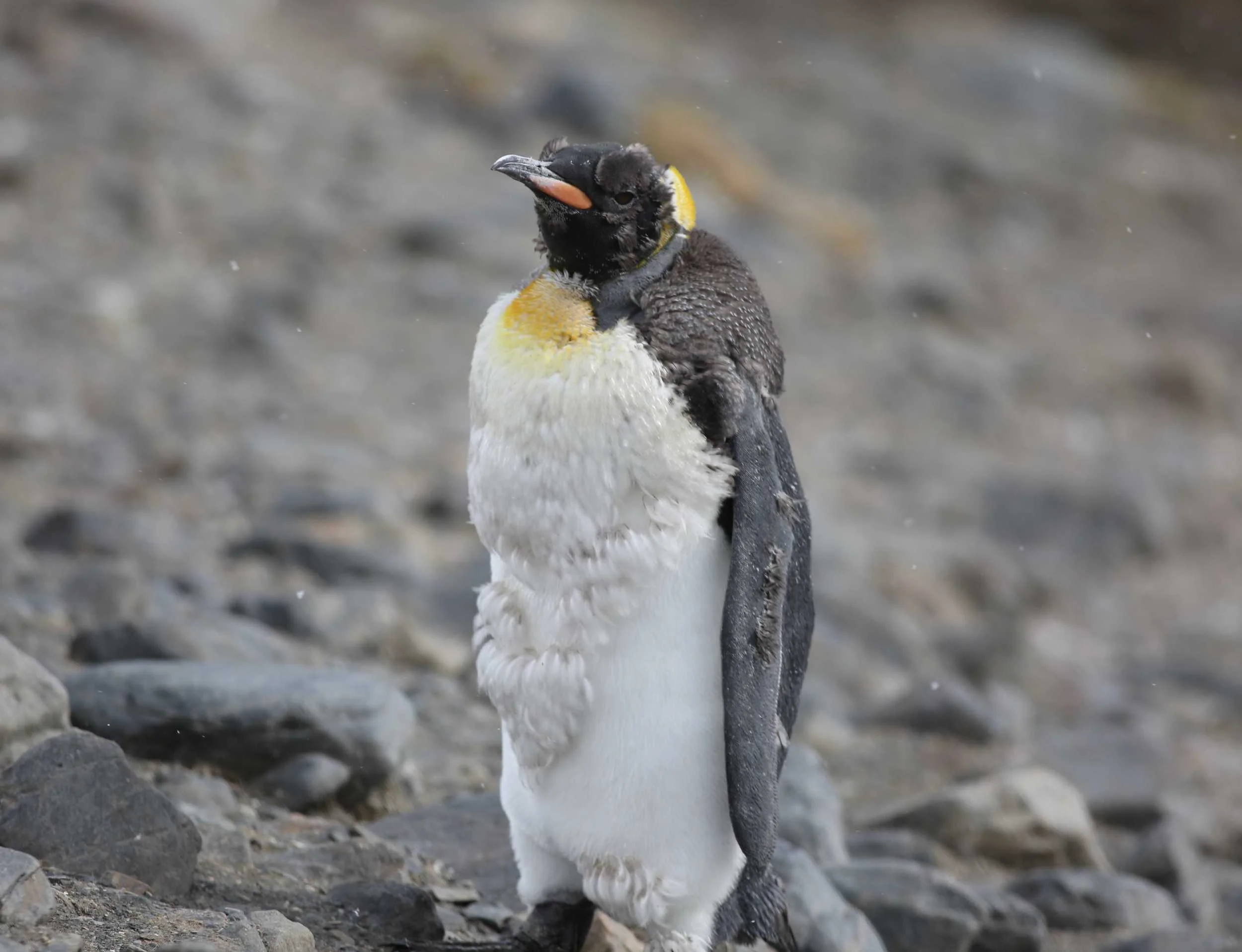These fascinating photos show what's known as a "catastrophic molt." It's a dramatic variation on the more gradual molting process that some animals undergo to replace old feathers, fur, hair or skin. The first two photos, taken by our friend Jenny Varley, a British photographer and conservationist, on the Islas San Benito off Baja, show Northern elephant seals losing their old skin and fur. This is happening with the females right now. The seals must haul out and stay ashore for nearly a month, unable to enter the water to feed because of temporary sensitivity to temperature change. (Elephant seals are unusual in this way; most other seal species can replace their skin and fur gradually while in the water.)
Northern elephant seal molting on the Islas San Bonito. (photo by Jenny Varley)
Photo by Jenny Varley
Pamelia and I were amazed to see thousands of king penguins undergoing a catastrophic molt (third photo) on our awe-inspiring recent trip to Antarctica (http://www.thenaturalistsnotebook.com/our-blog/on-a-beach-with-200000-king-penguins-and-thousands-of-elephant-seals). They too had to stay out of the water, unable to feed, for weeks.
King penguin molting at St. Andrews Bay on South Georgia Island. (photo by Craig Neff)
Molting animals can look unusual—feel free to share with us any shots you take of interesting ones. And if you want to see more of Jenny's wonderful wildlife photography, check out http://www.jennymvarley.co.uk/ Thanks, Jenny! —Craig Neff and Pamelia Markwood

